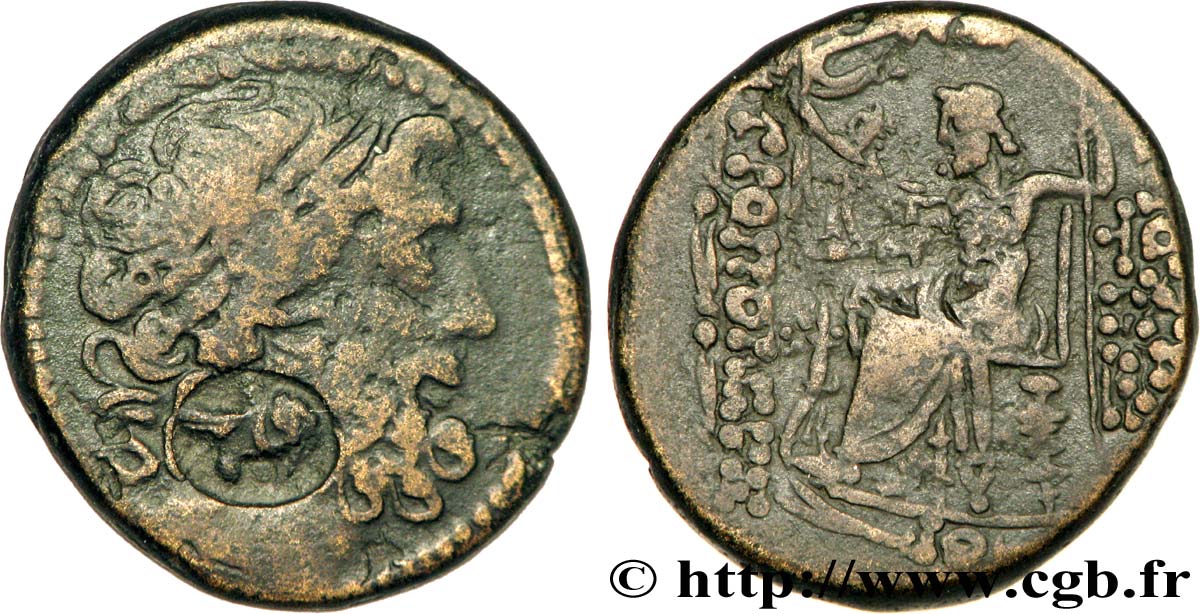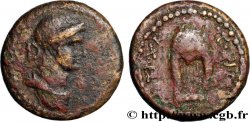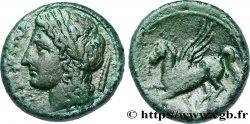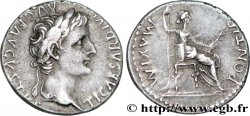E-auction 25-7400 - bgr_271130 - SYRIA - SELEUKIS UND PIERIA - ANTIOCHEIA Double-unité
Sie müssen angeschlossen sein und von cgb.fr genehmigt werden, um in einer E-Auktion teilzunehmen.Melden Sie sich an, um zu wetten..Die Kontobestätigungen sind innerhalb von 48 Stunden nach Ihrer Anmeldung gemacht.Warten Sie nicht bis die letzten zwei Tage vor dem Abschluss eines Verkaufs, um Ihre Registrierung abzuschließen. Klickend "BIETEN" verpflichten Sie sich vertraglich, diesen Artikel zu kaufen und Sie nehmen ohne Reserve die allgemeinen Verkaufsbedingungen für den e-auctions zu cgb.fr an.
Der Verkauf wird an der Zeit auf der Übersichtsseite angezeigt geschlossen werden. Angebote, die nach der Schließung Zeit empfangen sind, werden nicht gültig.
Bitte beachten Sie, dass die Fristen für die Einreichung Ihres Angebots auf unsere Server können variieren und es kann zur Ablehnung Ihres Angebots entstehen, wenn es in den letzten Sekunden des Verkaufs gesendet wird. Die Angebote sollen mit ganzer Zahl ausgeführt sein, Sie können Kommas oder des Punktes in Ihrem Angebot nicht erfassen. Bei Fragen klicken Sie hier, um einen Blick auf die FAQ E-Auktionen.
KEINE ANSCHAFFUNGSKOSTEN FÜR DIE KÄUFER.
KEINE ANSCHAFFUNGSKOSTEN FÜR DIE KÄUFER.
| Schätzung : | 145 € |
| Preis : | 41 € |
| Höchstgebot : | 82 € |
| Verkaufsende : | 07 Oktober 2013 15:00:00 |
| Bieter : | 12 Bieter |
Type : Double-unité
Datum: An 19
Name der Münzstätte / Stadt : Antioche, Syrie, Séleucie et Piérie
Metall : Kupfer
Durchmesser : 23 mm
Stempelstellung : 12 h.
Gewicht : 12,74 g.
Seltenheitsgrad : R1
Kommentare zum Erhaltungszustand:
Exemplaire sur un flan ovale et irrégulier. Très beau portrait de Zeus. Frappe un peu faible au revers. Jolie patine vert olive légèrement granuleuse
N° im Nachschlagewerk :
Vorderseite
Titulatur der Vorderseite ANÉPIGRAPHE.
Beschreibung Vorderseite Tête laurée de Zeus à droite ; grènetis circulaire.
Rückseite
Beschreibung Rückseite Zeus nu jusqu'à la ceinture, vêtu de l'himation assis à gauche, tenant une Niké de la main droite et un sceptre long de la gauche ; à ses pieds, une corne d'abondance ; le tout dans une couronne de laurier.
Legende des Reverses : ANTIOCEWN THS/ MHTROPOLEWS// IQ
Kommentare
Dénomination B. Avec l’ère pompéienne nous n’avons pas de double unité, mais seulement la dénomination B avec un poids maximum de 9,50 g et un diamètre de 22 millimètres (HGCS. 9/ 1373) qui est répertoriée seulement pour l’an 19. Les auteurs du Roman Provincial Coinage ont recensé neuf exemplaires avec un poids moyen de 11,84 g. Une contremarque au droit sur la tête Zeus (un oiseau debout à droite, une chouette ?)
Cette série semble avoir été frappée entre 66 et 46 AC., entre Pompée et César. Cette émission comprend deux grandes séries fabriquées selon deux étalons différents. Notre pièce appartient à la seconde et semble avoir été frappée selon l'étalon phénicien avec une série lourde et une légère. Notre pièce appartient au groupe lourd. Les auteurs du Roman Provincial Coinage n'ont répertorié que neuf exemplaires.
Denomination B. With the Pompeian era we do not have a double unit, but only the denomination B with a maximum weight of 9.50 g and a diameter of 22 millimeters (HGCS. 9/1373) which is listed only for the year 19. The authors of the Roman Provincial Coinage identified nine examples with an average weight of 11.84 g. A countermark to the obverse on the head of Zeus (a bird standing on the right, an owl?) This series seems to have been struck between 66 and 46 AC., between Pompey and Caesar. This issue includes two large series manufactured according to two different standards. Our coin belongs to the second and seems to have been struck according to the Phoenician standard with one heavy and one light series. Our part belongs to the heavy group. The authors of the Roman Provincial Coinage have only listed nine examples
Cette série semble avoir été frappée entre 66 et 46 AC., entre Pompée et César. Cette émission comprend deux grandes séries fabriquées selon deux étalons différents. Notre pièce appartient à la seconde et semble avoir été frappée selon l'étalon phénicien avec une série lourde et une légère. Notre pièce appartient au groupe lourd. Les auteurs du Roman Provincial Coinage n'ont répertorié que neuf exemplaires.
Denomination B. With the Pompeian era we do not have a double unit, but only the denomination B with a maximum weight of 9.50 g and a diameter of 22 millimeters (HGCS. 9/1373) which is listed only for the year 19. The authors of the Roman Provincial Coinage identified nine examples with an average weight of 11.84 g. A countermark to the obverse on the head of Zeus (a bird standing on the right, an owl?) This series seems to have been struck between 66 and 46 AC., between Pompey and Caesar. This issue includes two large series manufactured according to two different standards. Our coin belongs to the second and seems to have been struck according to the Phoenician standard with one heavy and one light series. Our part belongs to the heavy group. The authors of the Roman Provincial Coinage have only listed nine examples








 Berichten über einen Fehler
Berichten über einen Fehler Die Seite drucken
Die Seite drucken Teilen meiner Auswahl
Teilen meiner Auswahl Stellen Sie eine Frage
Stellen Sie eine Frage Einlieferung/Verkauf
Einlieferung/Verkauf
 Details
Details















